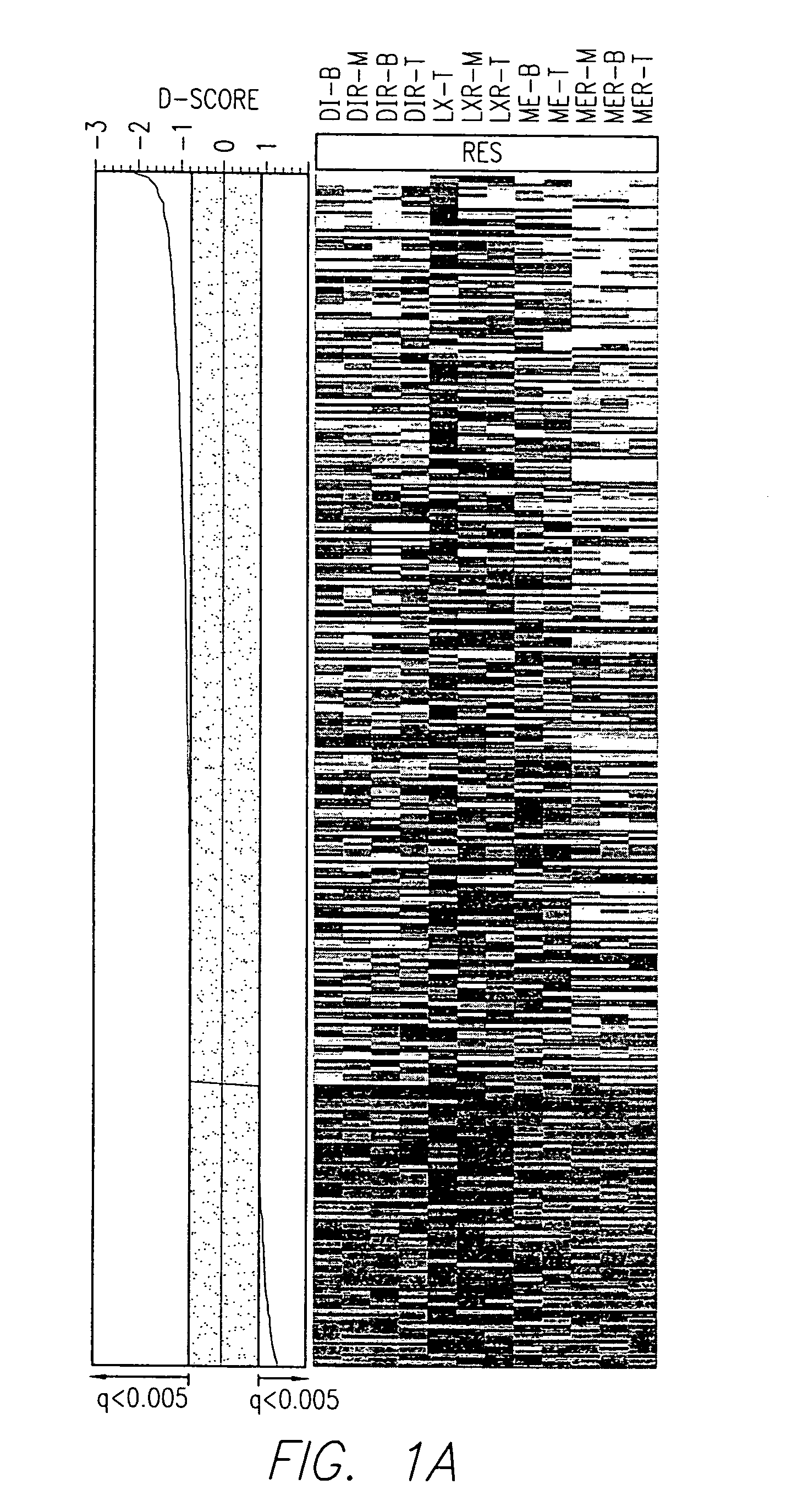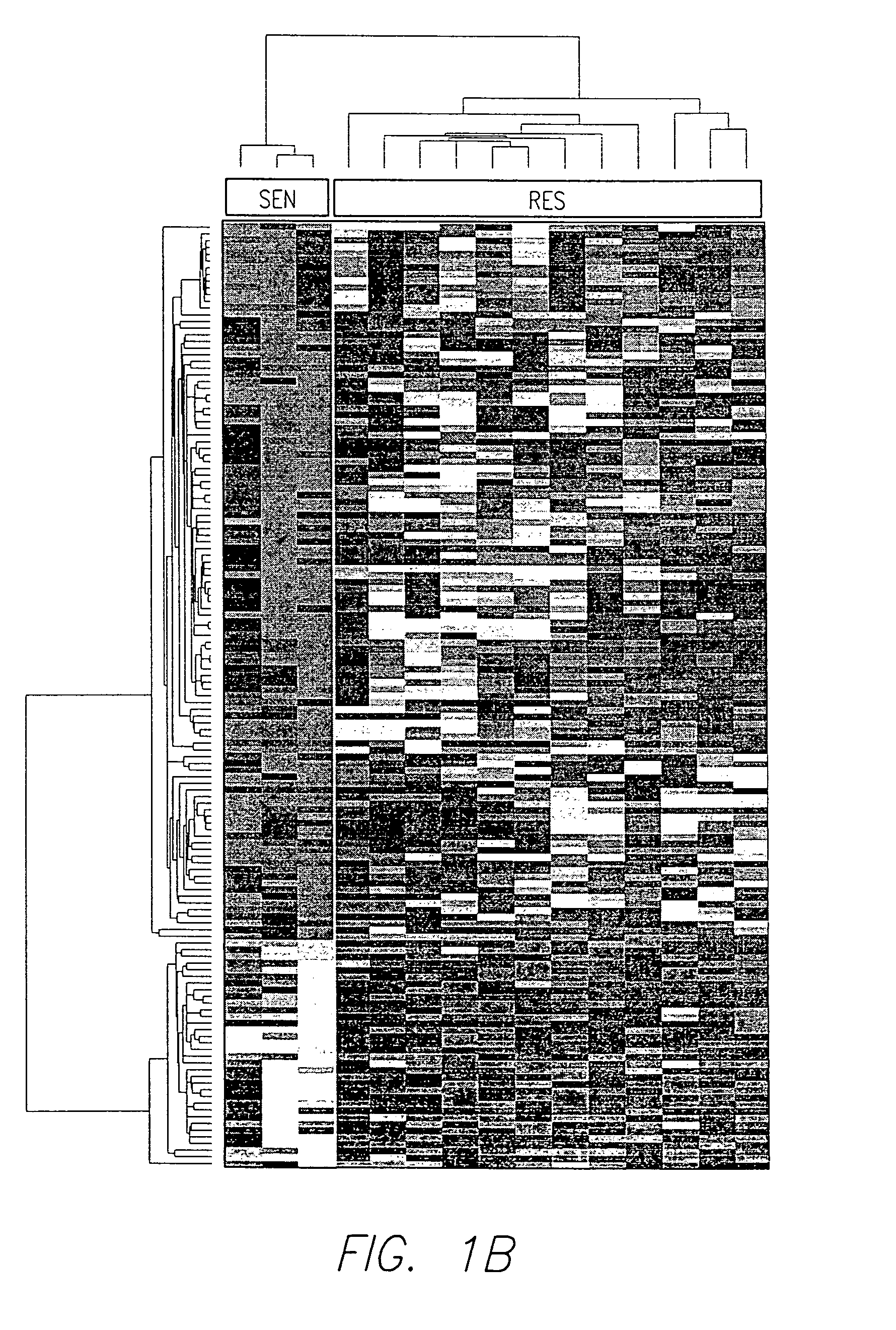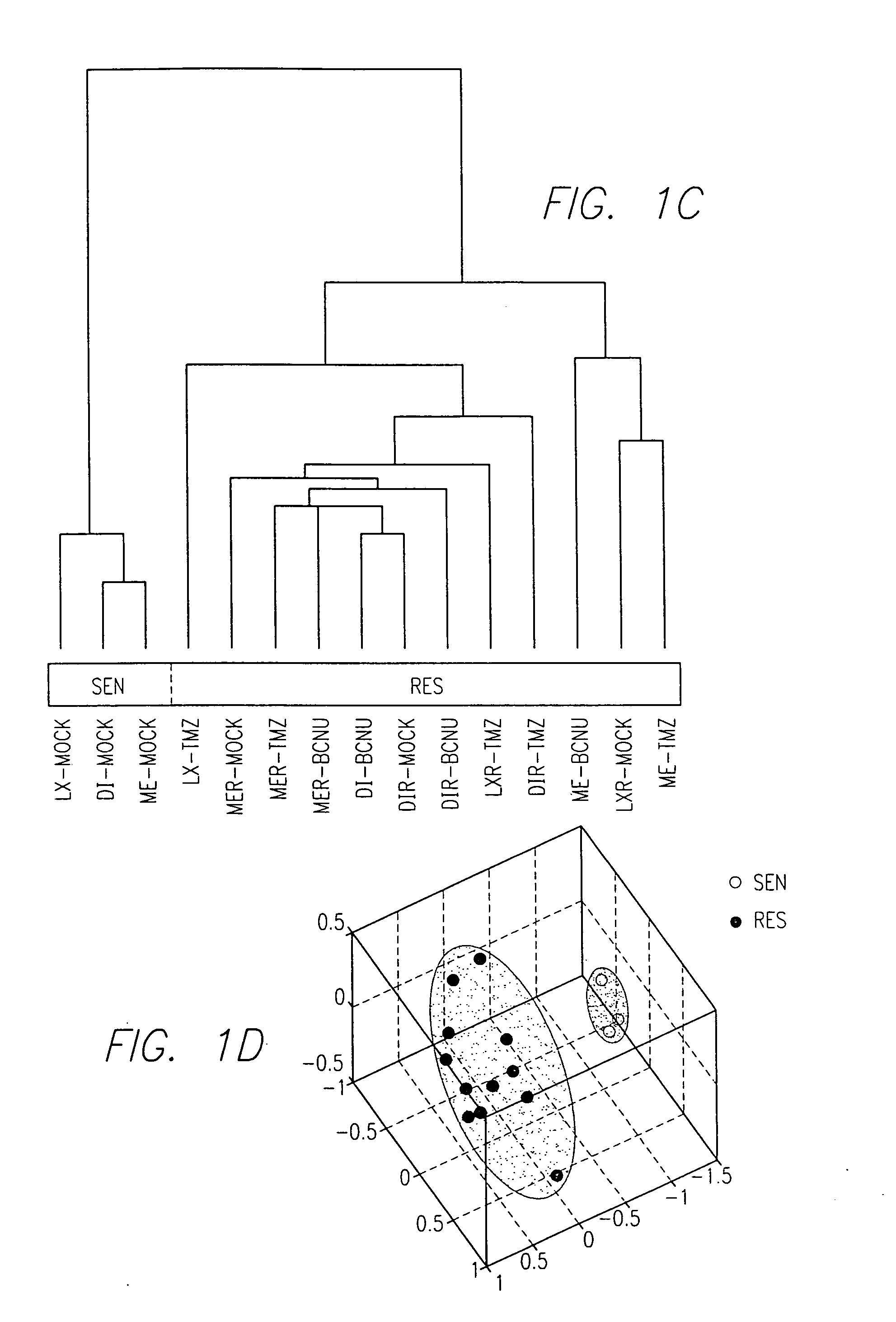Protein modulators of resistance to alkylating agents
a technology of alkylating agent and protein, applied in the field of cancer, can solve the problems of initiation of apoptosis, prolonged overall and disease-free survival of patients with glioblastoma multiforme, and poor clinical outcomes
- Summary
- Abstract
- Description
- Claims
- Application Information
AI Technical Summary
Benefits of technology
Problems solved by technology
Method used
Image
Examples
Embodiment Construction
Definitions
[0030]The term “Alkylating agent, or “O6-alkylating agent” means a drug which acts by adding an alkyl group to DNA which inhibits cellular DNA synthesis. The term is intended to include nitrosoureas, which act similarly to alkylating agents and also inhibit changes necessary for DNA repair. These agents cross the blood-brain barrier and are therefore used to treat brain tumors, lymphomas, multiple myeloma, and malignant melanoma. Carmustine (BCNU) and lomustine (CCNU) are the major drugs in this category. Temozolomide (TMZ) is now the first-line chemotherapeutic for malignant gliomas. Other representative alkylating agents include Cyclophosphamide, Ifosfamide, Cisplatinum, Carboplatinum, Procarbazine, etc. The alkylation of DNA can be performed via two types of nucleophilic reaction, the SN1 and SN2 reaction. Substances that act via SN1 reaction, have a high selectivity for alkylation at the O6 or N2-position of guanine and substances that act via SN2 reaction, have a hig...
PUM
| Property | Measurement | Unit |
|---|---|---|
| volume | aaaaa | aaaaa |
| resistance | aaaaa | aaaaa |
| survival time | aaaaa | aaaaa |
Abstract
Description
Claims
Application Information
 Login to View More
Login to View More - R&D
- Intellectual Property
- Life Sciences
- Materials
- Tech Scout
- Unparalleled Data Quality
- Higher Quality Content
- 60% Fewer Hallucinations
Browse by: Latest US Patents, China's latest patents, Technical Efficacy Thesaurus, Application Domain, Technology Topic, Popular Technical Reports.
© 2025 PatSnap. All rights reserved.Legal|Privacy policy|Modern Slavery Act Transparency Statement|Sitemap|About US| Contact US: help@patsnap.com



